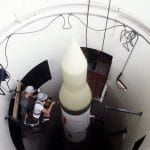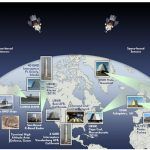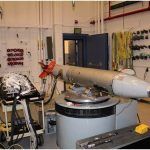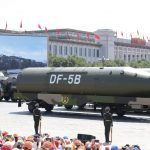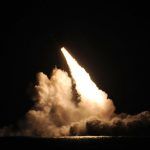Nuclear U.S. and Soviet/Russian Intercontinental Ballistic Missiles, 1959-2008
By Robert S. Norris, Hans M. Kristensen | January 1, 2009
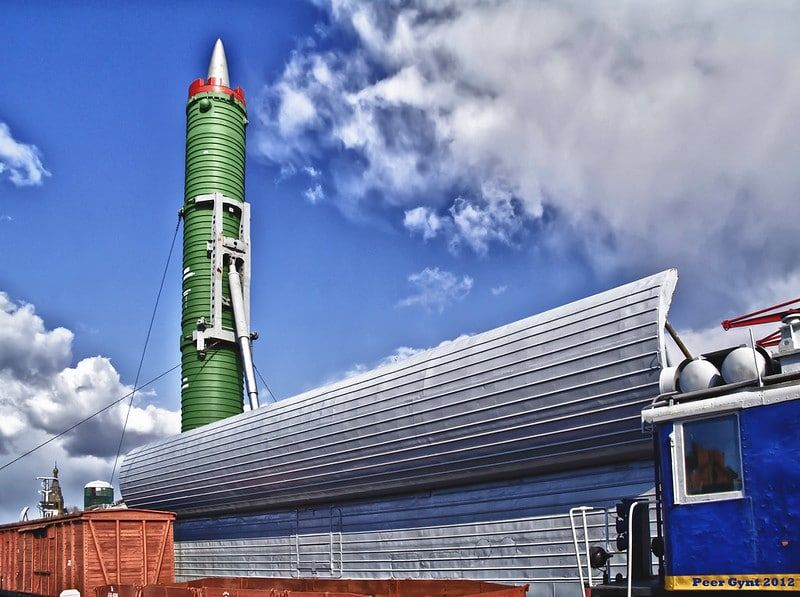 ICBM RT-23 Molodets at the Saint Petersburg Railway Museum. Credit: "ICBM RT-23 Molodets (SS-24 Scalpel). МБР РТ-23 'Молодец' (СС-24 'Скальпель')" by Peer.Gynt is licensed under CC BY-SA 2.0
ICBM RT-23 Molodets at the Saint Petersburg Railway Museum. Credit: "ICBM RT-23 Molodets (SS-24 Scalpel). МБР РТ-23 'Молодец' (СС-24 'Скальпель')" by Peer.Gynt is licensed under CC BY-SA 2.0
Nuclear Notebook: A history of U.S. and Soviet/Russian Nuclear ICBMs
Of the many components of the U.S.-Soviet arms race, the ballistic missile played a prominent role. The Soviet launch of Sputnik on October 4, 1957, forced the ballistic missile to the top of the Eisenhower administration’s agenda. If Moscow could launch a satellite into space eventually they could target a nuclear warhead to any place on Earth. To compound the near panic in the United States, the Soviets announced three days later that they had successfully tested a new thermonuclear warhead that presumably could be affixed to a ballistic missile.
During the ensuing decades, both sides put enormous resources into their intercontinental ballistic missile (ICBM) programs and into efforts to find out what the other side was doing. In general, early ICBMs were large and inaccurate, carried a single high-yield warhead, and were deployed aboveground, leaving them highly vulnerable. Later generations were deployed underground in hardened silos, were increasingly accurate, and some carried multiple warheads. Estimates of actual and future missile capabilities were the combustible fuel that stoked claims by advocates on both sides for new and better systems. In the United States, “missile gaps” loomed, and “windows of vulnerability” threatened national security, as the numbers and types of ICBMs became highly politicized in presidential and congressional races. In the Soviet Union, a similar irrational sense of fear arose…
To read this full article for free, visit our online archive here.
To download a PDF of this article, click this link.
To read an authoritative accounting of world nuclear arsenals, click here for all Nuclear Notebook columns.
The Nuclear Notebook is researched and written by Hans M. Kristensen, director of the Nuclear Information Project with the Federation of American Scientists and Robert S. Norris, a senior fellow with the FAS. The Nuclear Notebook column has been published in the Bulletin of the Atomic Scientists since 1987. The Nuclear Notebook column has been published in the Bulletin of the Atomic Scientists since 1987.
Together, we make the world safer.
The Bulletin elevates expert voices above the noise. But as an independent nonprofit organization, our operations depend on the support of readers like you. Help us continue to deliver quality journalism that holds leaders accountable. Your support of our work at any level is important. In return, we promise our coverage will be understandable, influential, vigilant, solution-oriented, and fair-minded. Together we can make a difference.



